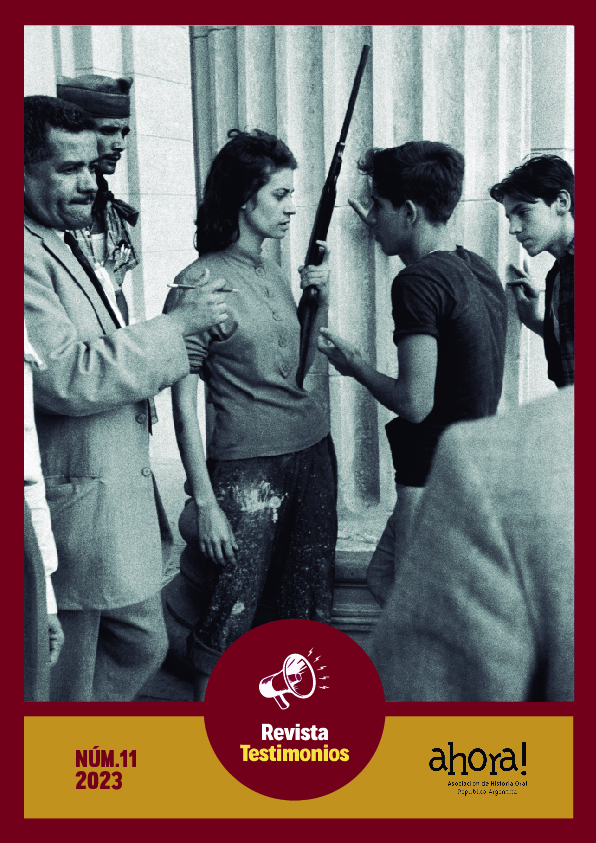Down the shining path of the university. The presence of PCP-Sendero Luminoso in the Universidad Nacional Mayor de San Marcos: historic revision from the memory of the student leaders (1980-1991)
Keywords:
Student movement, San Marcos University, PCP-Shining Path, Historical memoryAbstract
In the decade of the 80’s and part of the 90’s, Perú experienced the development of an internal war where the Communist Party of Peru (PCP-SL) rose up in arms with delimited political objectives. Through the advance of the insurgents in the urban zones, the universities are usually understood like spaces directed by the PCP-SL. The Nation University of San Marcos (UNMSM) will be in the dynamics of fight between the PCP-SL and the Peruvian State, and this last will generate an offensive on many places were suppose participated the insurgents, including the university centres. The predeterminate idea currently is the preponderance which the sanmarquino student movement were “dominate” for the PCP-SL, however, the complexity of the university scene, the political conditions inside and outside of San Marcos, the different stages of the internal war’s development and the reactions against the advance of the PCP-SL discuss with this idea. Next to the written source, the memory of the ex-leaders will useful for reframe and set a different experience to the raised by the official speech, till the popular, about the conformation of the political movement inside of the UNMSM.
References
Barela, L.; Miguez, M. y García, L. (2009). Algunos apuntes sobre la historia oral y cómo abordarla, Dirección General Patrimonio e Instituto Histórico, Buenos Aires.
Cabrera, T. (2019). De La Casona a El Panfleto: Tres décadas en busca de identidad sanmarquina, Revista Quehacer, N° 3, Vol. 2, Lima. Extraído de: http://revistaquehacer.pe/n3#de-la-casona-a-el-panfleto-tres-decadas-en-busca-de-identidad-sanmarquina}
Comisión de la Verdad y Reconciliación [CVR]. 2001. Informe, Lima.
Cotler, J. (1986). La radicalización política de la juventud popular en el Perú. Revista de la CEPAL, 26, p. 109-120, Santiago de Chile.
Degregori, C. (2011). El surgimiento de Sendero Luminoso. Ayacucho 1969-1979. Lima: IEP.
Flores Galindo, A. (1985). “Violencia y campesinado”. En: Manrique, N. y Flores Galindo, A. Violencia y campesinado, 17-40. Lima: Instituto de Apoyo Agrario.
Gracia Ríos, M. (2012). San Marcos en el ojo de la tormenta. Revista Quehacer, N° 187, p. 65-70, Lima.
Granados, M. (2019). La universidad de Huamanga y el PCP Sendero Luminoso. Lima: Edición del autor.
Guerra García, F. (1983). Velasco: Del Estado oligárquico al capitalismo de Estado. Lima: Ediciones CEDEP.
Huaytalla, A.; Romero, L. y Vargas, Z. (Eds.). (2013). Nosotros los sociólogos. Legados, perspectivas y desafíos de la sociología en San Marcos. Lima: Fondo Editorial de la UNMSM.
Lynch, N. (1990). Los jóvenes rojos de San Marcos. El radicalismo universitario de los años sesenta. Lima: El zorro de abajo Ediciones.
Mac Gregor, F. (1988). Sociedad, ley y universidad peruana. Lima: Fondo editorial de la PUCP.
Mariátegui, J. (1928). 7 ensayos de interpretación de la realidad peruana. Lima: Empresa Editora Amauta.
Pollak, M. (2006). Memoria, olvido, silencio. La producción social de identidades frente a situaciones límite. Buenos Aires: Ediciones Al Margen.
Rendón, S. (2021). La construcción social de una narrativa alternativa sobre la guerra insurgente-contrainsurgente, Revista Ideele, 300.
Sandoval, P. (2012). El genio y la botella: sobre Movadef y Sendero Luminoso en San Marcos, Revista Argumentos, N° 6, Vol. 5, p. 1-7.
Downloads
Published
Issue
Section
License
Copyright (c) 2022 Rodrigo Arturo Palao Paucar

This work is licensed under a Creative Commons Attribution-NonCommercial-ShareAlike 4.0 International License.
No se permite un uso comercial de la obra original ni de las posibles obras derivadas, la distribución de las cuales se debe hacer con una licencia igual a la que regula la obra original.













